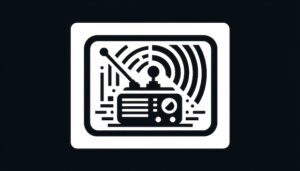Ham radio, or amateur radio, is a popular hobby and service that brings people, electronics, and communication together. People use ham radio to talk across town, around the world, or even into space without the Internet or mobile phones. It’s fun, social, educational, and can be a lifeline during times of need. If you’re looking to join this vibrant community, the first step is obtaining your ham radio license. This comprehensive guide will walk you through everything you need to know about getting licensed, preparing for the exam, and what to expect once you’re a licensed operator.
Understanding Ham Radio Licenses
In the United States, the Federal Communications Commission (FCC) regulates amateur radio licenses. There are three levels of licenses:
- Technician Class: This entry-level license allows access to all Amateur Radio frequencies above 30 megahertz, allowing you to communicate locally and, in some cases, regionally.
- General Class: The General license opens up access to most amateur radio frequencies, including those on the shortwave bands. This allows for international communication.
- Amateur Extra Class: This is the highest level of license, granting access to all amateur frequencies.
Each level requires passing an exam that tests your knowledge of technical and regulatory topics.
Preparing for the Exam
Study Materials
- Books and Manuals: There are many great study guides and manuals specifically designed for ham radio exams. The ARRL (American Radio Relay League) offers excellent resources for each level of licensing.
- Online Resources: Websites like HamStudy.org provide interactive study tools and practice exams that can help you gauge your readiness.
- Classes: Many local amateur radio clubs offer licensing classes. These can be invaluable for understanding complex concepts and asking questions.
Study Tips
- Start with the Technician Class: Even if your goal is the Amateur Extra Class license, start with the Technician material. Each class builds on the knowledge of the previous one.
- Make a Study Schedule: Regular, dedicated study times help retain information. Even 30 minutes a day can make a big difference.
- Practice Exams: Take practice exams frequently. They help familiarize you with the format of the actual test and highlight areas where you need further study.
Taking the Exam
Finding an Exam Session
The ARRL website and other amateur radio organization websites list upcoming exam sessions. Many clubs and testing centers offer walk-in sessions.
What to Bring
- Two Forms of Identification: Typically, a photo ID and another form of ID are required.
- The Exam Fee: This is usually around $15, though it can vary.
- A Calculator: You’ll be allowed to use a simple calculator (not a smartphone or device with internet access).
Exam Day Tips
- Review, Don’t Cram: Give your brain a break the day before the exam. A light review is fine, but avoid cramming.
- Read Each Question Carefully: Some questions may be designed to trip you up. Read them carefully and think about your answer.
- Skip and Return: If you’re unsure about a question, skip it and return to it later.
After Passing the Exam
Congratulations, you’ve passed your exam! Here’s what comes next:
Getting Your Call Sign
The FCC will assign you a call sign, which is your unique identifier on the air. You can check the FCC’s ULS (Universal Licensing System) database for your call sign about a week after the exam.
Joining the Community
- Local Clubs: Joining a local amateur radio club can connect you with experienced hams who can offer advice, mentorship, and friendship.
- On the Air: Don’t be afraid to get on the air. Making your first contact is a thrilling experience, and the amateur radio community is known for being welcoming to newcomers.
Continuing Education
Amateur radio is a vast hobby with many different aspects to explore, from digital modes and satellite communication to emergency services and contesting. Many hams find that their learning never stops.
Conclusion
Earning your ham radio license is just the beginning of a rewarding journey into the world of amateur radio. Whether you’re interested in technical experimentation, community service, or simply making new friends around the world, ham radio has something to offer. Remember, the key to success is preparation, practice, and participation in the vibrant ham radio community. Welcome to the airwaves!
